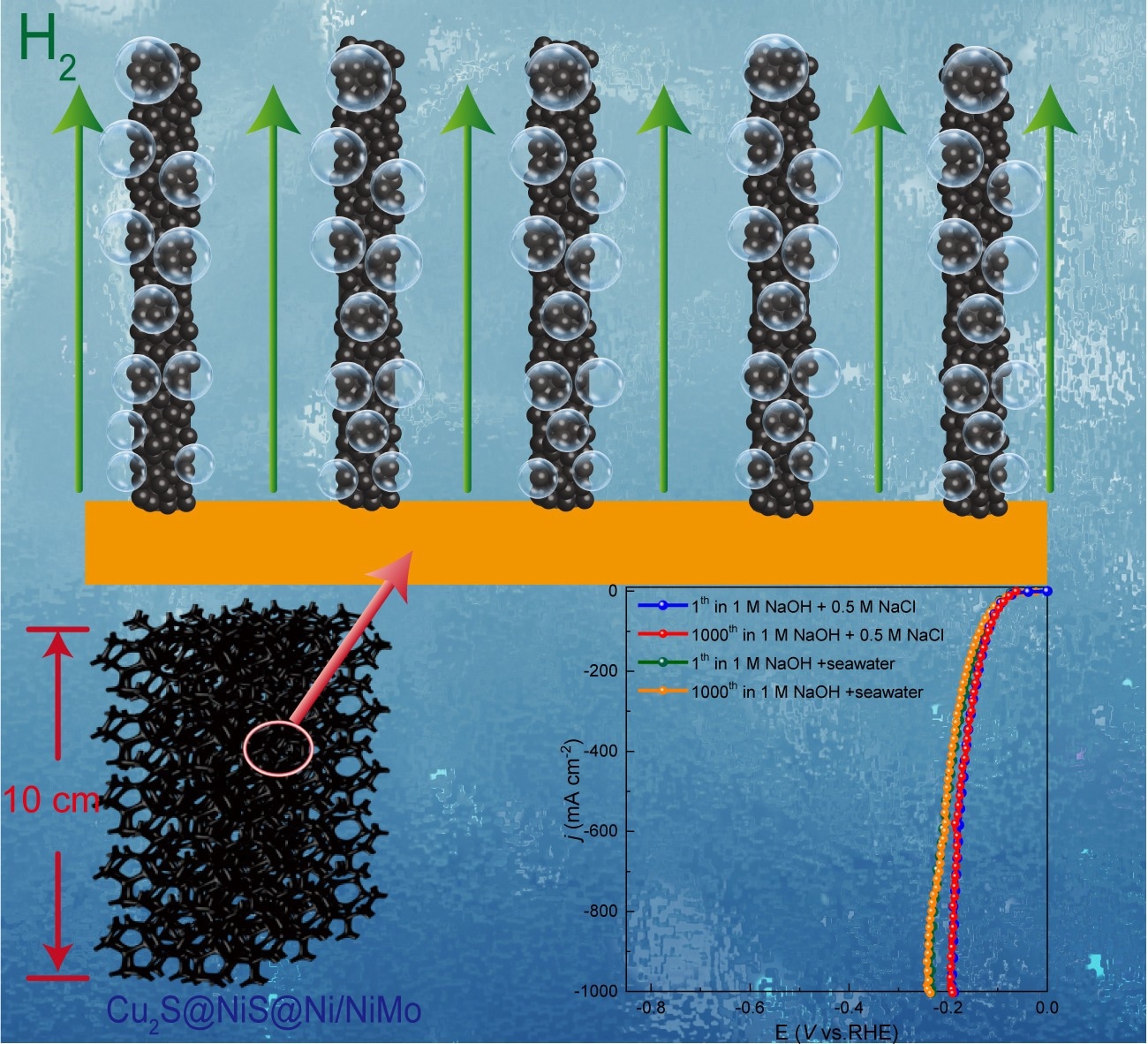A study team headed by Prof. Zhiyi Lu from the Ningbo Institute of Materials Technology and Engineering (NIMTE) of the Chinese Academy of Sciences (CAS) has suggested a facile and affordable strategy to synthesize a hybrid cathode to acquire high-performance seawater electrolysis for the generation of hydrogen.
 The hybrid cathode for high-performance hydrogen generation. Image Credit: NIMTE
The hybrid cathode for high-performance hydrogen generation. Image Credit: NIMTE
Advanced Functional Materials published this study.
Hydrogen can be produced via seawater electrolysis, helping conserve freshwater supplies, and is hence regarded as a sustainable energy conversion and storage strategy.
Seawater electrolysis, driven by offshore renewable energy sources like wind, solar, and tidal energy, is a potentially vital pathway to green hydrogen production, which contributes to the goal of “carbon peaking and carbon neutrality.” Nevertheless, the complicated fluctuation of offshore renewable energy, like wind, solar, and tidal energy, in adverse conditions has restricted hydrogen generation performance.
On this basis, the scientists suggested a facile strategy that involves sulfuration, etching, and electrodeposition to synthesize a Cu2S@NiS@Ni/NiMo cathode on the scale of 10 × 10 cm2.
The hybrid cathode displays superior hydrogen evolution performance at a current density of 1,000 mA cm-2 with overpotentials of 250 and 190 mV in alkaline real seawater and artificial seawater, respectively.
Besides, even at high current density, the superaerophobic nanoarray structure facilitates hydrogen mass transport.
In steady-state conditions, the developed cathode exhibited slight overpotential loss after more than 2,000 hours at 500 mA cm-2, showing outstanding cathode stability.
In spite of the complicated fluctuation of offshore renewable energy, the hybrid cathode exhibited great anti-corrosion ability, with an endurance of 1,500 hours in accelerated start/stop practical conditions.
This study has provided an effective, synthesis technique to synthesize high-performance cathodes for industrial scale-up hydrogen production via seawater electrolysis.
Furthermore, in industrial scale-up sustainable hydrogen production, the assessment of performance and prices has thrown light on the high potential of the synthesized cathode.
The research was financially aided by the National Key Research and Development Project of China, the Ningbo Yongjiang Talent Introduction Programme, the Bellwethers Project of Zhejiang Research and Development Plan, the Ningbo S&T Innovation 2025 Major Special Program, and the National Natural Science Foundation of China, etc.
Journal Reference:
Xu, W., et al. (2023). Scalable Fabrication of Cu 2 S@NiS@Ni/NiMo Hybrid Cathode for High‐Performance Seawater Electrolysis. Advanced Material Science. doi.org/10.1002/adfm.202302263.